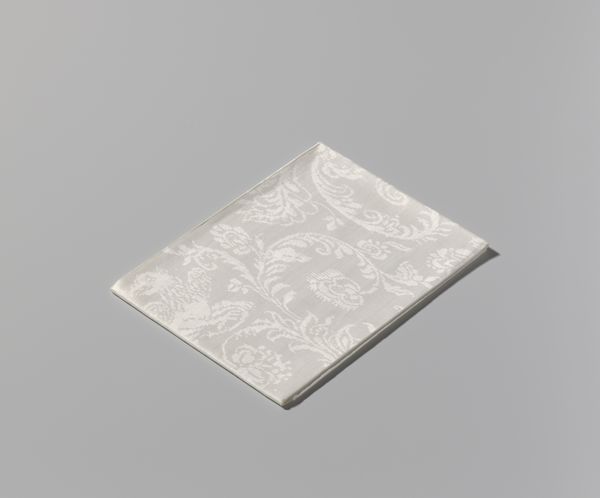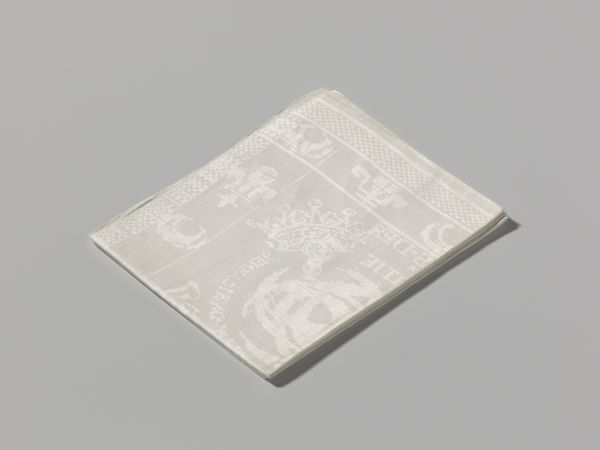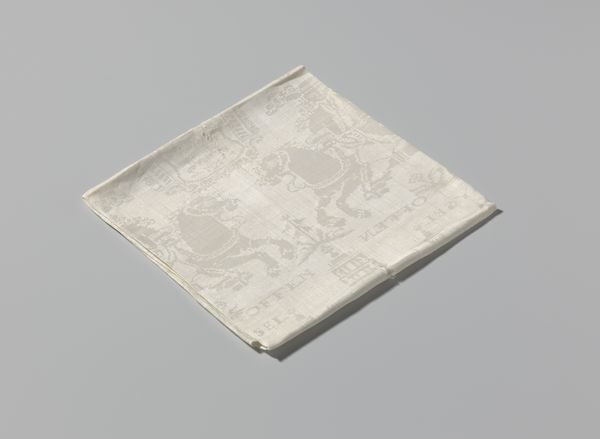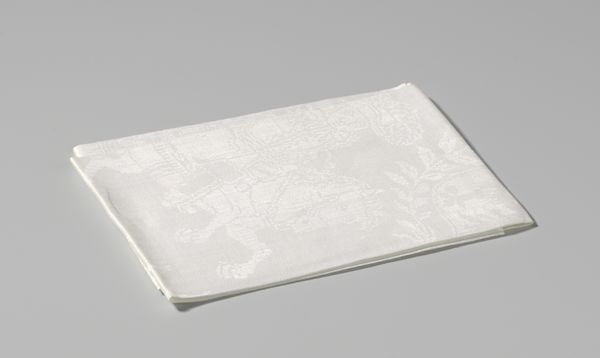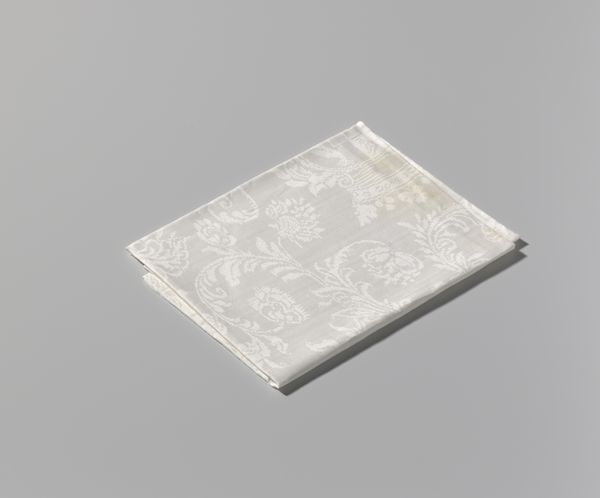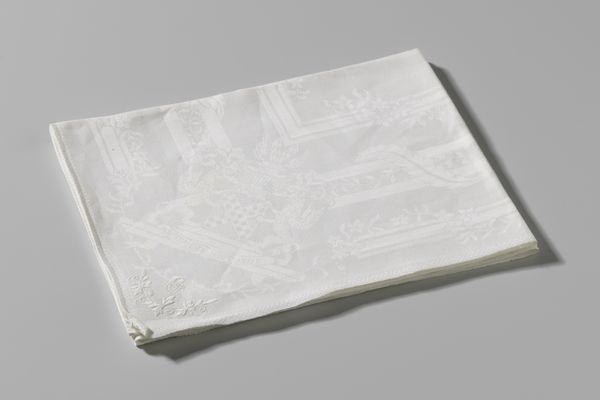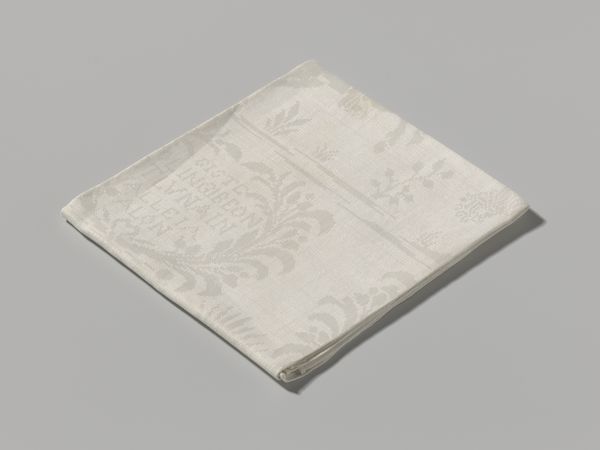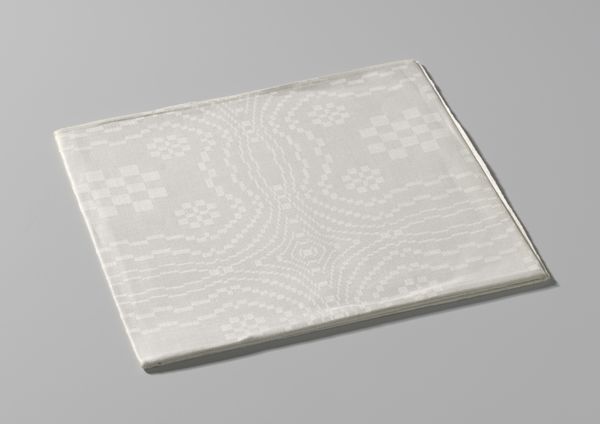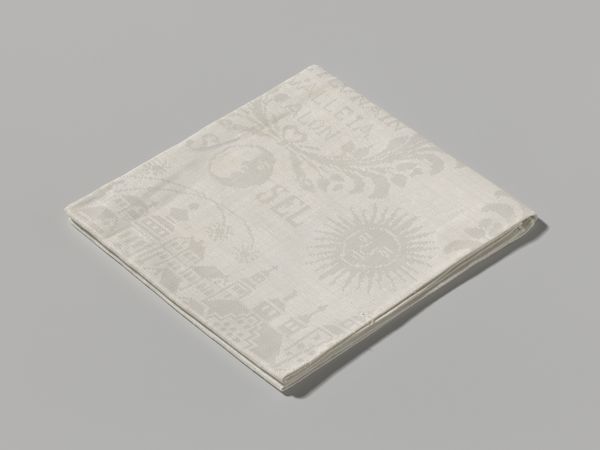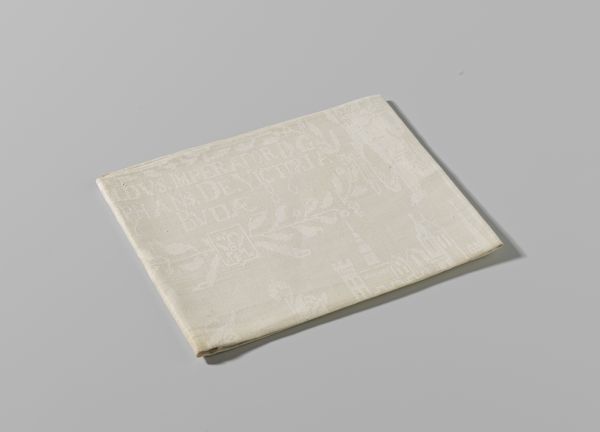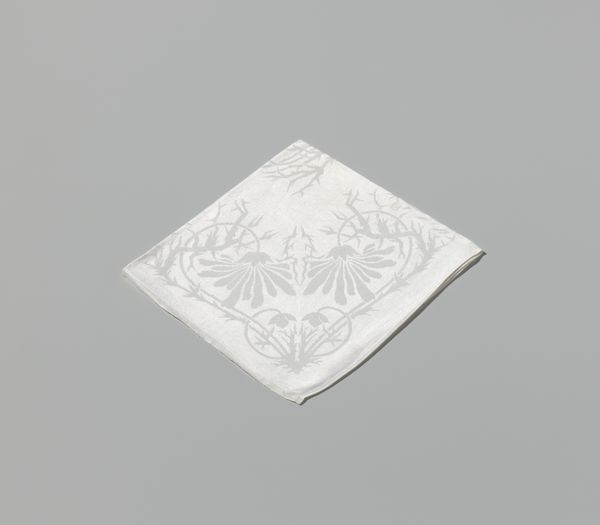
mixed-media, textile
#
mixed-media
#
textile
#
decorative-art
Dimensions: length 115.0 cm, width 85.0 cm
Copyright: Rijks Museum: Open Domain
This is a linen napkin, woven by Firma J. Maas, bearing the Van der Dussen family crest. The damask technique used to create it involves a loom with a Jacquard mechanism, allowing for intricate patterns to be woven directly into the fabric. This process creates areas of contrasting sheen and texture, revealing the design. The choice of linen speaks to a certain level of luxury and status, as it's a durable yet delicate material. The depiction of a family crest elevates the humble napkin to an object imbued with social significance, a symbol of lineage and belonging. Producing this napkin would have involved skilled labor, both in the design and the weaving. So, while it may seem like a simple object, it’s tied to broader issues of class, labor, and consumption. Understanding the materials, making, and context of an artwork like this helps us to move beyond traditional distinctions between craft and fine art.
Comments
No comments
Be the first to comment and join the conversation on the ultimate creative platform.
